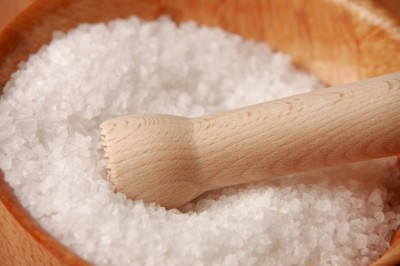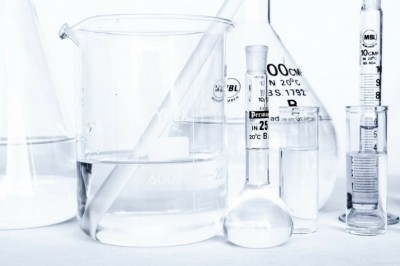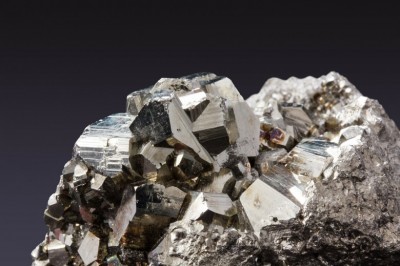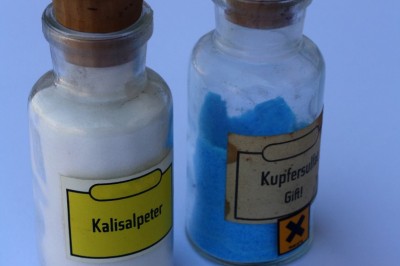Recognizing The Principal Properties of Sodium Hydroxide
Sodium hydroxide is an important industrial chemical. It is used in manufacturing soaps and detergents, household cleaning agents, paper, and textiles. Pure form of this inorganic base occurs as a white solid commonly available in form of granules, flakes or pellets. It may also be present in varying concentrations in aqueous solutions.
It has a chemical formula of NaOH and is a commonly used base in chemistry laboratories. The pure compound is water-loving and chemists call it a hygroscopic substance. It also readily reacts with carbon dioxide, which is an acidic anhydride, forming a basic salt called sodium carbonate. Because of its reactivity, the compound is often sealed in an airtight container. It dissolves in water forming heat-evolving solutions. This liberation of heat may be enough to ignite flammable or combustible matter nearby. The compound is known to be ionic, dissociating completely into sodium cations and hydroxide anions in aqueous solutions. However, these ions are also present when salt (NaCl), which is also an ionic substance, is dissolved in water.
It is known popularly in basic chemistry that this compound reacts with hydrochloric acid to form sodium chloride or table salt. This popular neutralization reaction can be written as
NaOH(aq) + HCl(aq) → NaCl(aq) + H2O(l).
It is a wonder all these compounds are present in household substances; sodium hydroxide being found in cleaning agents, hydrochloric acid in bleaching and toilet cleaning liquids, and sodium chloride commonly found as table salt. This neutralization reaction is exothermic or heat-releasing. This reaction with acids has an important role in chemical analysis known as titration, which measures the amount of acid present in a specific solution.
As earlier mentioned the compound reacts with carbon dioxide which is an acidic oxide. It is also known to react with other acidic oxides like sulfur dioxide (SO2) and hydrogen sulfide (H2S), which are particularly harmful and toxic gases. Their reaction with sodium hydroxide prevents them from being released into the atmosphere and becoming air pollutants.
The compound is known to undergo slow reaction with glass, forming a compound known as sodium silicate. Hence, glass joints and valves in pipes exposed to the chemical may tend to freeze as a result of the reaction. Glass wares containing hot NaOH can become damaged after long periods. Frosted glass is a feature of damage due to the alkaline.
The base undergoes violent reactions with other transition metals, with a particular exception on iron, which is not an amphoteric metal. An amphoteric substance acts either as a base or an acid, and therefore has the property to react with both acids and bases. A number of transition metals like aluminum have this property.
A mistake was made in United Kingdom where an aluminum road tanker was used to transport a solution containing 25% NaOH in its compartment. That tanker was damaged due to direct reaction of aluminum with the alkaline and liberation of hydrogen gas causing pressure to build inside the tanker. The reaction yields sodium aluminate and hydrogen gas. Like the acid-base neutralization reaction, this one is also exothermic. This particular reaction with aluminum has been proposed to be a prospective source of fuel for hydrogen-powered cars.
Most hydroxides of metals, except NaOH are insoluble in water. That is why this substance is used to precipitate insoluble hydroxide. For instance, when aluminum sulfate reacts with sodium hydroxide, the resulting compound is aluminum hydroxide, which is used in water treatment process called flocculation.
The alkaline reacts with carboxylic acids. An important reaction is between NaOH and stearic acid (a saturated fatty acid), which yields sodium stearate through a process called saponification. Sodium stearate is a major constituent of soaps. This is how important lye or caustic soda is in soap manufacturing.
Jo is a writer for ReAgent Chemical Services Ltd (http://www.reagent.co.uk), an established UK based chemical company that creates, has a supply of and sells an enormous range of premium chemical. If your business is searching for premium chemical product such as Sodium Hydroxide or has other industrial compound requirements for applications similar to chemical mixture, analytical purposes and cleaning then check out ReAgent Chemical Services Ltd.



























